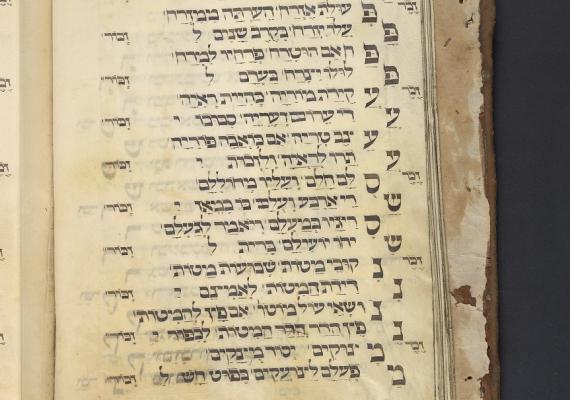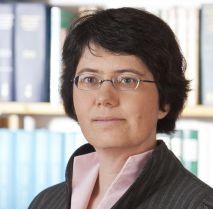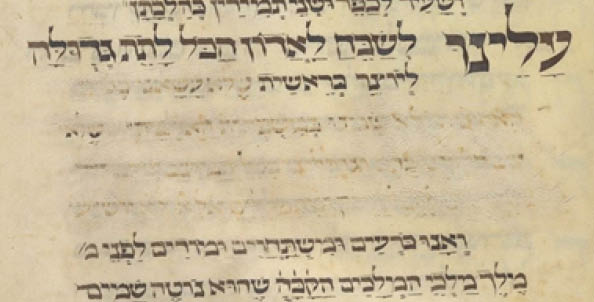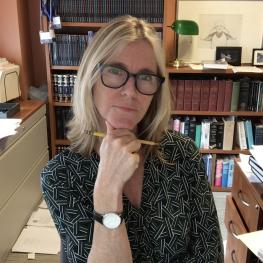Making a Manuscript Sing

In her recent lecture, SIMS-Katz fellow Professor Elisabeth Hollender of Goethe University in Frankfurt, Germany, introduced a packed audience to the scars and stories told by one fourteenth-century German Mahzor, or prayer book for the holidays. The text, CAJS Rare MS 382 (browse the full digitized version here) comes from the Library of the Herbert D. Katz Center at the University of Pennsylvania Libraries.

Bringing her vast knowledge of medieval Ashkenazi liturgy and liturgical poetry (piyyut) to a single material object—one used in regular religious life, undistinguished by fancy illuminations—she helped us to see it as a window into cultural history, and as she did so, offered us a tantalizing glimpse at the vagaries of one community over time. Like our other SIMS-Katz Distinguished Fellows in Jewish Manuscript Studies, Hollender was able to show how actual physical manuscripts can open up worlds to a historian that would not be visible were they only to refer to the same contents in printed form.
A few fascinating details of the many she highlighted:
- She showed how work on the Mahzor had at some point been interrupted and finished by another scribe in another hand, one apparently with fewer resources.

- Although its few decorative panels were simple (like the one in the image on the left below), they were evidently still tempting to thieves. In the image on the right below, you can tell from the outline around the single large opening word et that someone cut the decorative panel out and pasted a simple one in its place. Other pages have been stolen from the manuscript as well.

- She showed evidence of charring on the outside, explaining that the Mahzor survived a fire at one point in its life. Perhaps because of that it was rebound, and the burned outer pages were removed and the blacked edges cut back. Indeed, during one rebinding the pages were trimmed of almost two inches on each margin. When this happened the binder cut around marginal notes and folded them in to save them.

- The one below shows a correction to the rite, telling the officiant to recite not the calligraphed text (noting: “we don’t say that”), but instead the poem scratched in the margin.

- The manuscript preserves ghostly erased passages that tell us something about Christian censorship in German lands.

Professor Hollender has filmed a MOOC (Massive Open Online Course), which will become available to all in a few months. In it she talks in depth about these and many other attributes of this incredible document.
The lecture was sponsored by the Jewish Studies Program at the University of Pennsylvania. The Schoenberg Institute for Manuscript Studies & Herbert D. Katz Center Distinguished Fellowship in Jewish Manuscript Studies is funded in part by the David Ruderman Distinguished Scholar Fund.
Hollender is a two-time past fellow at the Katz Center, first in 1998–99 during a year on Poetry and Culture in Medieval and Renaissance Jewry; the second time in 2012–13, where the group focused on Thirteenth-Century Judaism.
Click here to watch a full recording of Hollender's lecture from March 19, 2019.
